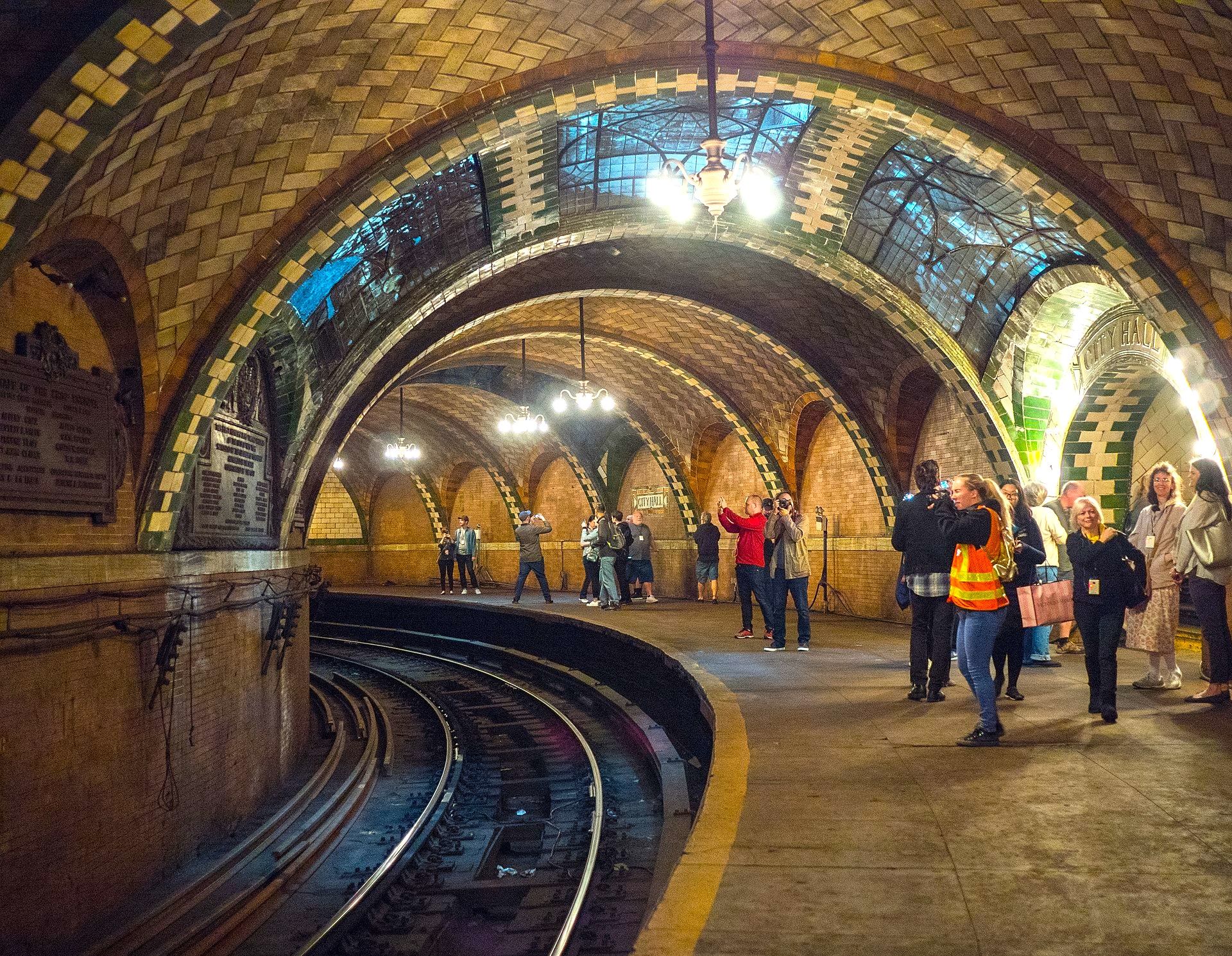A Grand Opening Underground
On October 27, 1904, New York City opened its first subway line. Its southern terminal, the City Hall station, was the centerpiece—a single curved platform beneath City Hall Park, clad in Romanesque Revival architecture. Designed by Heins & LaFarge with vaulted ceilings by Rafael Guastavino, the station featured skylights, chandeliers, faience plaques, and colored tilework. That day, Mayor George B. McClellan Jr. operated the inaugural train, beginning a new era of public transportation.
An Architectural Showpiece
City Hall station stood apart from all others. It was built as a loop to reverse trains, with a sweeping 147-foot radius curve and intricate tile arches. Trains entered on one side and exited facing north, all beneath skylights embedded in the park above. Riders saw chandeliers hanging from terracotta vaults, and brass plaques commemorated the subway’s creators.
Decline and Closure
Despite its beauty, the station’s tight curve and short platform made it impractical for longer trains. Just 600 feet from the busier Brooklyn Bridge station, it saw declining use. On December 31, 1945, after 41 years of service, it closed to passengers.
A Hidden Loop in Use
Though closed, the loop still serves a function—6 trains use it daily to reverse direction. Passengers who stay onboard catch a glimpse of one of New York’s best-kept secrets.

